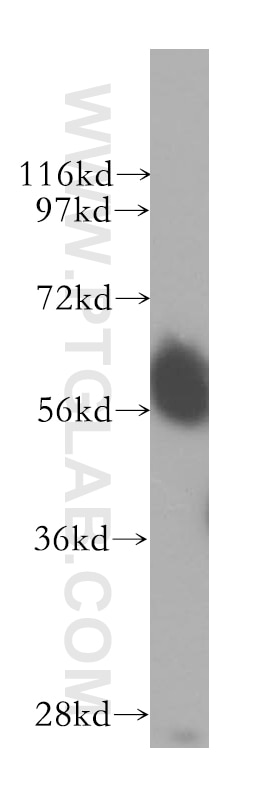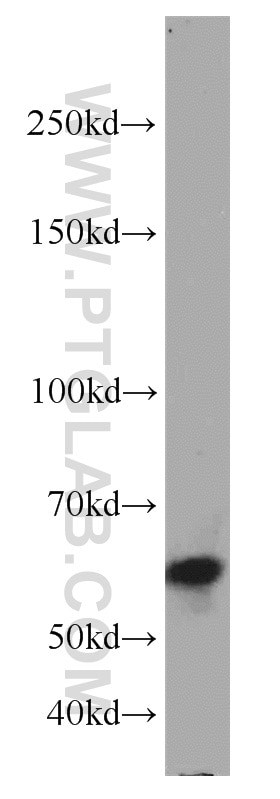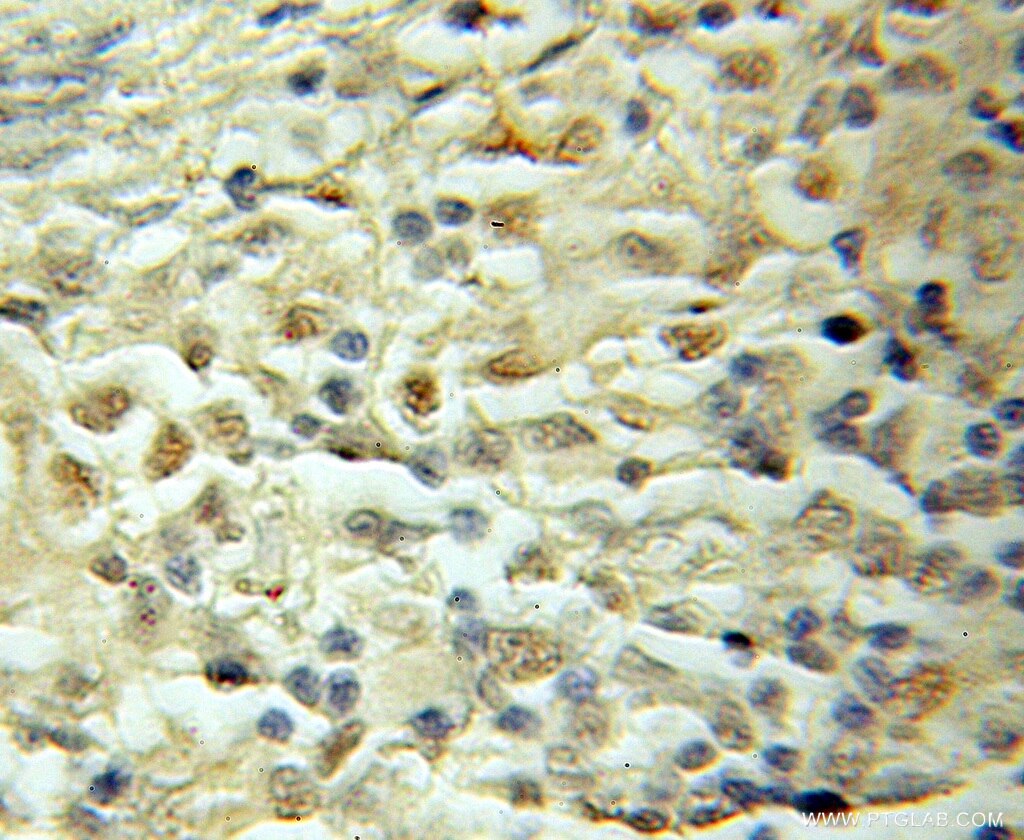Validation Data Gallery
Tested Applications
| Positive WB detected in | mouse brain tissue, human brain tissue, Jurkat cells |
| Positive IP detected in | mouse brain tissue |
| Positive IHC detected in | human lymphoma tissue Note: suggested antigen retrieval with TE buffer pH 9.0; (*) Alternatively, antigen retrieval may be performed with citrate buffer pH 6.0 |
| Positive IF/ICC detected in | SH-SY5Y cells |
Recommended dilution
| Application | Dilution |
|---|---|
| Western Blot (WB) | WB : 1:500-1:1000 |
| Immunoprecipitation (IP) | IP : 0.5-4.0 ug for 1.0-3.0 mg of total protein lysate |
| Immunohistochemistry (IHC) | IHC : 1:20-1:200 |
| Immunofluorescence (IF)/ICC | IF/ICC : 1:20-1:200 |
| It is recommended that this reagent should be titrated in each testing system to obtain optimal results. | |
| Sample-dependent, Check data in validation data gallery. | |
Published Applications
| KD/KO | See 2 publications below |
| WB | See 7 publications below |
| IHC | See 1 publications below |
| CoIP | See 1 publications below |
Product Information
10998-2-AP targets SMARCD1 in WB, IHC, IF/ICC, IP, CoIP, ELISA applications and shows reactivity with human, mouse, rat samples.
| Tested Reactivity | human, mouse, rat |
| Cited Reactivity | human, mouse |
| Host / Isotype | Rabbit / IgG |
| Class | Polyclonal |
| Type | Antibody |
| Immunogen | SMARCD1 fusion protein Ag1453 相同性解析による交差性が予測される生物種 |
| Full Name | SWI/SNF related, matrix associated, actin dependent regulator of chromatin, subfamily d, member 1 |
| Calculated molecular weight | 58 kDa |
| Observed molecular weight | 58 kDa |
| GenBank accession number | BC009368 |
| Gene Symbol | SMARCD1 |
| Gene ID (NCBI) | 6602 |
| RRID | AB_2192133 |
| Conjugate | Unconjugated |
| Form | Liquid |
| Purification Method | Antigen affinity purification |
| UNIPROT ID | Q96GM5 |
| Storage Buffer | PBS with 0.02% sodium azide and 50% glycerol , pH 7.3 |
| Storage Conditions | Store at -20°C. Stable for one year after shipment. Aliquoting is unnecessary for -20oC storage. |
Background Information
SMARCD1 belongs to the nuclear SWI/SNF chromatin remodeling complex, which regulates transcription and interacts with nucleolin in the nucleus. In addition, it's a member of the neural progenitors-specific chromatin remodeling complex (npBAF complex) and the neuron-specific chromatin remodeling complex (nBAF complex). It possesses a SWIB domain which is homologous to and shares a common fold with the p53-binding domain of MDM2, a cell cycle regulator which interacts with NPM1. SMARCD1 has a strong influence on the Vitamin D-mediated transcriptional activity from an enhancer Vitamin D receptor element (VDRE). And it can mediates critical interactions between nuclear receptors and the BRG1/SMARCA4 chromatin-remodeling complex for transactivation. This antibody may have across reaction with SMARCD2.
Protocols
| Product Specific Protocols | |
|---|---|
| WB protocol for SMARCD1 antibody 10998-2-AP | Download protocol |
| IHC protocol for SMARCD1 antibody 10998-2-AP | Download protocol |
| IF protocol for SMARCD1 antibody 10998-2-AP | Download protocol |
| IP protocol for SMARCD1 antibody 10998-2-AP | Download protocol |
| Standard Protocols | |
|---|---|
| Click here to view our Standard Protocols |
Publications
| Species | Application | Title |
|---|---|---|
Nat Commun BAF60a deficiency uncouples chromatin accessibility and cold sensitivity from white fat browning.
| ||
Nucleic Acids Res HRP2-DPF3a-BAF complex coordinates histone modification and chromatin remodeling to regulate myogenic gene transcription. | ||
Cancer Lett MicroRNA-490-3P targets CDK1 and inhibits ovarian epithelial carcinoma tumorigenesis and progression. | ||
J Biol Chem Phosphorylation of Williams syndrome transcription factor by MAPK induces a switching between two distinct chromatin remodeling complexes. | ||
J Cell Mol Med DLEU1 contributes to ovarian carcinoma tumourigenesis and development by interacting with miR-490-3p and altering CDK1 expression. | ||
NPJ Aging Mech Dis SMARCD1 regulates senescence-associated lipid accumulation in hepatocytes.
|






